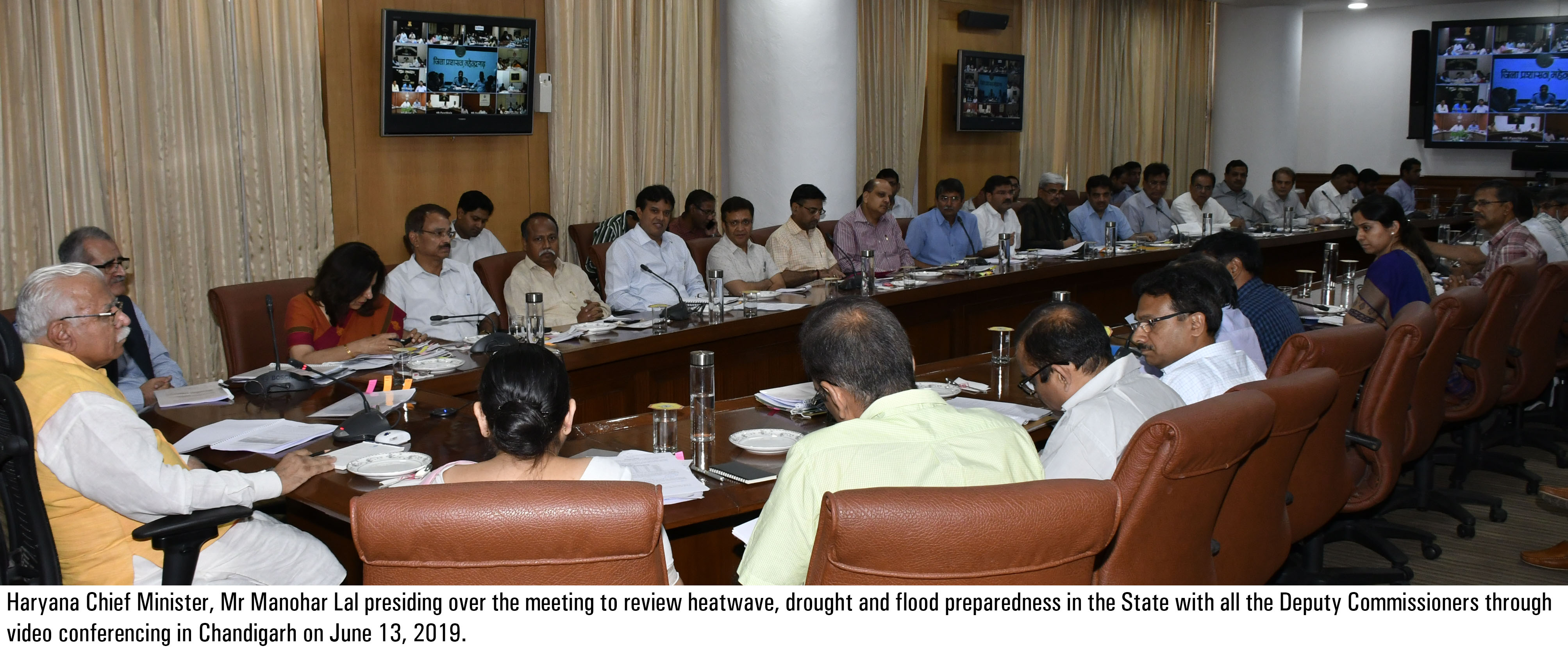
Chandigarh, June 13 – Haryana Chief Minister, Mr. Manohar Lal said that Saksham Haryana, a state-wide educational transformation program being implemented in the state for the last five years, has started yielding positive results. In Haryana, 86 per cent of students in Haryana are now Saksham/grade level competent. Apart from this, 13 more blocks have been announced Saksham, making the total Saksham blocks 107 after eight Rounds of assessment. Also, 14 districts in Haryana are 100 per cent Saksham after eight rounds of assessment over 18 months.
While giving detailed information in this regard here today, Education Minister, Mr. Ram Bilas Sharma said that multiple state level initiatives have been adopted including focus on remedial education through a Learning Enhancement Program, strengthening the academic review and monitoring mechanism in the state and improving the technology systems (Management Information System, Academic Monitoring System) of the education department. Assessment reforms are being carried out by administering centralised exams, improving data collection and data analysis and reducing cheating.
He said that through these initiatives, the state aims to become Saksham, that is, to achieve grade level competencies for 80 per cent students in the state. Grade level competencies means that a student in a particular grade knows all the competencies or skills defined for that grade. For example, a grade 7 student is grade level competent if he knows the competencies that are taught in grade 7. For a block to be Saksham, more than 80 per cent of its students need to be grade level competent and for a district to become Saksham, all its blocks need to become Saksham. For Haryana to become Saksham, all its districts need to become Saksham.
The Education Minister said that students of grade 3, 5 and 7 are assessed in Hindi language and mathematics on a sample basis. A scientific sampling method is used to choose schools, which are a best representation of rural, urban, boys, girls, primary and secondary. It is in these schools that the third party assessment is conducted. Based on the results of third party assessment, it is decided whether the block has actually become Saksham or not.
He said that if a block is confident that 80 per cent of its students have achieved grade level competency, it nominates itself to be assessed under ‘Saksham Ghoshna’. The state verifies their nomination through an independent third party assessment administered by testing agency Gray Matters India. It tests syllabus as prescribed by national and SCERT Haryana and adheres to the standards of the curriculum designed by SCERT and NCERT.
Mr. Sharma said that between December 2017 and May 2019, eight rounds of assessments have been conducted. Till February 2019, seven rounds of Saksham Ghoshna had been conducted and 94 blocks were announced Saksham. Another round of assessment was conducted on May 17 for the remaining 25 blocks that had not been able to achieve Saksham status. On May 17, 84,981 students from 1,105 schools were tested in 25 blocks across 13 districts. The results are announced today June 13, 2019 and 13 more blocks have been declared Saksham/grade level competent in Hindi and Math. Apart from this, eight blocks are very close to becoming Saksham. After eight rounds of Saksham Ghoshna, 90 per cent of blocks, that is 107 out of 119 blocks in Haryana, are now Saksham and 14 out of 22 districts have become fully Saksham. With the culmination of this round, 86 per cent of students of Haryana are grade level competent in Hindi and Math.
He said that 14 districts that are now fully Saksham included Jhajjar, Charkhi Dadri, Kaithal, Bhiwani, Panchkula, Mahendragarh, Karnal, Sonipat, Panipat, Gurugram, Sirsa, Rewari, Hisar and Jind. The 13 new blocks which have been declared Saksham today included Agroha, Babain, Barwala, Behal, Jagadhri, Kalanaur, Mustafabad, Pinjore, Raipur Rani, Ratia, Siwan and Siwani. Similarly, the eight nearly Saksham blocks are Barara, Ballabgarh, Ferozepur Jhirka, Ladwa, Nagina, Punhana, Rohtak and Tohana. Apart from this, four non Saksham blocks are Ambala - I (City), Ambala - II (Cantt), Chhachhrauli and Hathin.
Project Director, Chief Minister’s Good Governance Associates Programme, Dr. Rakesh Gupta said that for blocks that have become Saksham/grade level competent in Hindi and Math, an assessment in English was conducted to vie for Saksham plus title. Five blocks were tested in February 2019 of which one turned Saksham plus. In May 2019, 26 more blocks were tested and four have become Saksham plus.
He said that in order to make the blocks Saksham and Saksham plus, the block in co-ordination with the district implemented several reforms. Detailed district level as well as micro block-level planning and implementation was carried out. From March to May, all the non-Saksham blocks implemented block transformation plans containing academic and leadership interventions. District and block officials came together and everyone including DEO, DEEO, BEO, DIET principals, DIET lecturers, DPCs, APCs, CMGGAs and teachers were engaged in the preparation exercise. Regular mentoring and monitoring visits were made to ensure competency based teaching, LEP compliance. Regular pre-assessments were conducted and rigorous data analysis at the block and school level was conducted to ensure that all steps were targeted towards weak students, competencies and schools. DIETs and teachers also made micro-level plans to teach students at the right level based on their grade level competence. Regular reviews were done at cluster level, he added.
Dr. Gupta said that the state now aims to make all classes from 3 to 8, Saksham across all blocks, sustain the Saksham status of all blocks and improve quality of education in secondary classes. The next round of assessments will be conducted in August 2019. NITI Aayog on national level is also recognising the learnings from the state so that other states can also improve their learning levels, he added.
Chandigarh, June 13 – In Haryana, 10 lakh cattle will be insured in this financial year through the National Live Stock Mission under the ‘Pandit Deendayal Upadhyaya Samuhik Pashudhan Bima Yojana’, after which Haryana will become the state giving health and life protection to highest livestock population in the country. The scheme is getting popular among cattle rearer which is obvious from the fact that one-lakh cattle have so far been insured since April 2019.
In the center, the Prime Minister, Mr. Narendra Modi and in Haryana, the Chief Minister, Manohar Lal have adopted a strategy to increase the income of the farmers and cattle rearer in agriculture and other associated activities by making their livestock risk-free. Under the ‘Pandit Deendayal Upadhyaya Samuhik Pashudhan Bima Yojana’, cent percent premium of those belonging to Scheduled Castes is being paid by the government whereas other beneficiaries are given one year insurance at Rs. 100 per cattle for big animals such as cows and buffaloes, and Rs 25 per cattle for small animals such as sheep, goats and pigs. Under this scheme to make the cattle rearing risk-free, a target has been set to insure 10 lakh cattle in the entire state from April 2019, of which one lakh cattle have been insured till date.
In the event of accidental death of cattle, death due to disease, death due to electric shock, death caused by venomous creatures, death due to flood or fire, compensation up to Rs 86,000 will be paid to the cattle rearer. Through this scheme, those belonging to Scheduled Castes will be given free insurance of five cattle whereas other will be given insurance for up to five cattle at the rate of Rs. 100 per cattle.



